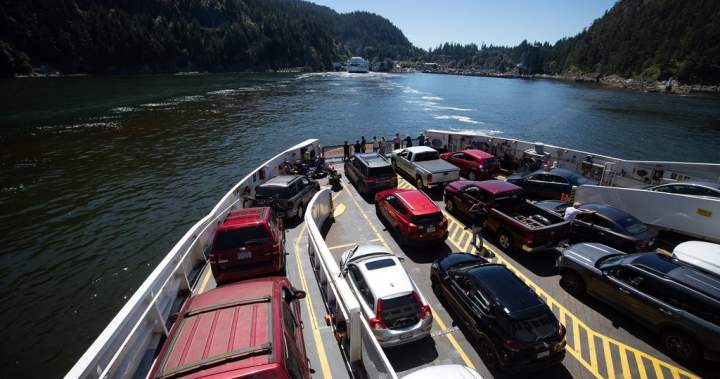The tension between British Columbia and Ottawa over ferry subsidies has reached a new boiling point. Premier David Eby didn’t mince words last week when he called out the federal government for what he sees as a glaring regional disparity in transportation funding.
“It’s frustrating to see the federal government subsidizing ferry travel on the East Coast while British Columbians pay some of the highest fares in the country,” Eby told reporters during a stop in Victoria. His comments came after Ottawa announced a $6.6 million subsidy to Marine Atlantic, which slashed passenger fares by 50 percent on routes between Newfoundland and Nova Scotia.
For many coastal communities in B.C., ferries aren’t a luxury but a lifeline. Just ask Sarah Nilsson, a small business owner on Gabriola Island. “When fares go up, everything gets more expensive here – food, building supplies, even getting to medical appointments,” she explained during a community meeting last month.
The numbers tell a stark story of regional difference. According to Transport Canada figures, Marine Atlantic receives approximately $25 per passenger in federal subsidies, while BC Ferries sees less than $5 per passenger from federal coffers. This disparity has grown by nearly 20 percent over the past five years, based on an analysis by the Union of BC Municipalities.
BC Ferries operates 39 vessels serving 47 terminals across 25 routes – essentially functioning as an extension of the highway system for coastal communities. Unlike their Atlantic counterparts, BC Ferries has moved toward a user-pay model under provincial oversight, resulting in fare increases that have outpaced inflation since 2003.
Transportation Minister Rob Fleming backed Eby’s criticism, pointing to what he calls a “constitutional double standard.” Fleming cited the constitutional obligation to maintain transportation links to Newfoundland as part of its terms of Confederation, while noting that B.C.’s ferry-dependent communities deserve similar consideration.
“There’s nothing wrong with supporting Maritime transportation,” Fleming said. “But there should be fairness in how these essential services are funded across the country.”
The federal response has been measured. Transport Minister Pablo Rodriguez’s office issued a statement emphasizing that Marine Atlantic’s subsidy stems from constitutional obligations dating back to Newfoundland’s entry into Confederation in 1949. However, the statement noted that “the government remains committed to working with all provinces on transportation solutions that work for Canadians.”
For coastal economists, the issue extends beyond simple regional rivalry. Dr. Hannah Roberge, an economist at Simon Fraser University who specializes in transportation policy, points to broader economic impacts.
“When you have such different fare structures across regions, you’re essentially creating different economic playing fields,” Roberge explained. “Tourism, small businesses, and the cost of living in coastal B.C. communities are all affected by these higher transportation costs.”
The ferry funding disparity has real consequences for people like Josh Williams, a contractor who regularly travels between Vancouver Island and the mainland. “I have to build ferry costs into my bids now. Sometimes it means I’m not competitive with city-based businesses,” Williams said during a chamber of commerce forum in Nanaimo.
BC Ferries has been working to modernize its fleet and infrastructure, recently announcing plans for four new hybrid-electric vessels to replace aging ships on major routes. However, this $1.1 billion investment will primarily come from fare revenue and provincial contributions, not federal funding.
According to BC Ferries’ most recent financial reports, passenger fares now cover approximately 85 percent of operating costs, compared to just 60 percent for Marine Atlantic routes. This difference translates directly to higher prices for British Columbians using what many consider an essential service.
The provincial government estimates that bringing federal subsidies for BC Ferries in line with Atlantic services would allow for a 25-30 percent reduction in fares – a change that could transform coastal economies and accessibility.
Premier Eby has indicated he plans to raise the issue at the next First Ministers’ meeting scheduled for early next year. “This isn’t about East versus West,” Eby emphasized. “It’s about a fair approach to essential transportation services across Canada.”
Community advocates like the Ferry Advisory Committee Chairs, representing 13 coastal communities, have long pushed for more equitable federal support. Their recent brief to Transport Canada documented how rising fares have led to decreased ridership and economic hardship in ferry-dependent communities.
“When a senior on a fixed income can’t afford to visit family on the mainland, or a small business can’t afford to bring in supplies, we’re talking about real harm to community well-being,” said Diana Mumford, chair of the Southern Sunshine Coast Ferry Advisory Committee.
The debate raises larger questions about regional equity in federal funding formulas. Critics point out that while B.C. contributes approximately 13 percent of federal tax revenue, it receives disproportionately less in transportation infrastructure funding compared to some other regions.
As coastal communities await potential changes, many are taking matters into their own hands. Some island municipalities have formed transportation cooperatives to coordinate deliveries and reduce ferry dependency, while others have launched campaigns to highlight the economic importance of affordable ferry service.
Whether this latest round of criticism will lead to more balanced ferry funding remains to be seen. But for the million-plus British Columbians who depend on ferries as their highway, the fight for fairness shows no signs of ebbing anytime soon.






